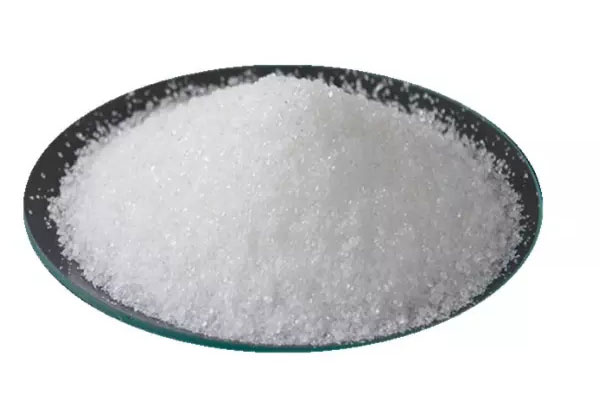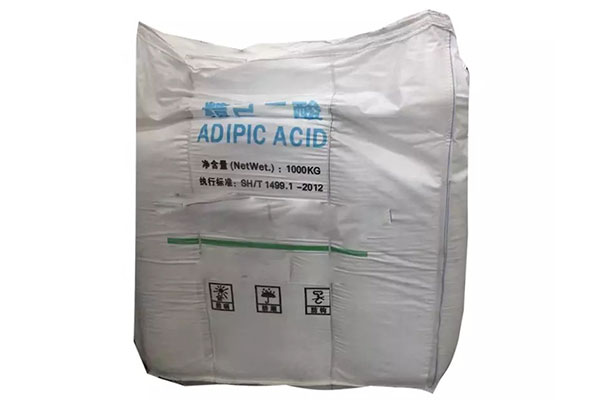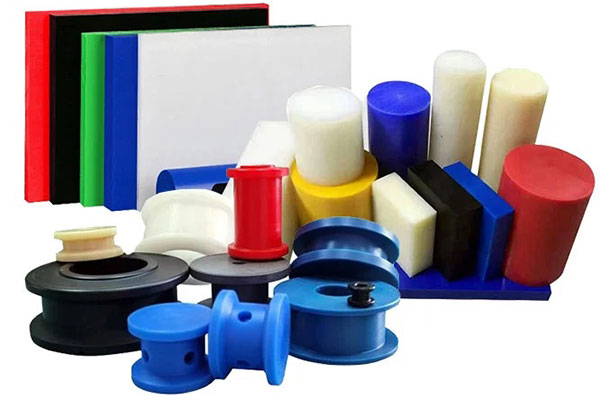Home » Adipic Acid

What Is Adipic Acid
- Synonyms: Hexanedioic acid
- Molecular formula: C₆H₁₀O₄
- CAS No.: 124-04-9
- HS Code: 29171200
- Appearance: White Crystal Powder
Adipic acid, with other names of hexanedioic acid, is an important organic dibasic acid. Adipic acid is an industrially important dicarboxylic acid, which plays an important role in chemical production, organic synthesis industry, medicine, lubricant manufacturing,etc. The yield second among all dicarboxylic acids. It is mainly used in the manufacture of nylon 66 fiber and nylon 66 resin, polyurethane foam. In the organic synthesis industry, it is the basic raw material of adiponitrile and hexamethylenediamine, and can also be used in the production of lubricants and plasticizers, such as dioctyl adipate. In addition, it can also be used in medicine, etc.



Technical Specifications of Hexanedioic Acid in Chemate
| Item | Adipic Acid |
| APPEARANCE | White crystal powder |
| Purity | 99.8% MIN |
| Melting Point | 152℃ MIN |
| Water content (m/m) | 0.2% MAX |
| Colour (pt-co) | 5 MAX |
| Fe (mg/kg) | 0.4 MAX |
| HNO3 (mg/kg) | 3.0 MAX |
| ASH (mg/kg) | 4.0 MAX |
Would Like The Quotation
Leave more about your requirements, such as, tech grade or food grade, quantity, package, country, etc.
What Are Adipic Acid Uses
- Mainly used as raw material for nylon 66 and engineering plastics. Secondly, it is used in the production of various ester products, used as plasticizers and advanced lubricants. Adipic acid (AA) has huge industrial practical uses in the production of nylon 66, lubricants and plasticizers.
- Used as the raw material of polyurethane elastomer.
- In the food industry, it is used as sour agent, buffer and flavor enhancer for beverages and fruit juices, as well as for preparing wine and processed cheese.Adipic acid has a mild and long-lasting sour taste, and the pH value changes little in a large concentration range, so it is a good pH value regulator. It can be used in jelly powder and solid beverage powder.
- Adipic acid is also a raw material for medicine, yeast purification, pesticides, adhesives, synthetic leather, synthetic dyes and fragrances.
- It can be used as a chemical reagent, a reference product for the calibration of alkalis and potassium permanganate, plastic manufacturing, and organic synthesis.
- Used as analytical reagent. For synthetic plastics, polyurethane foam.
- Raw materials for organic synthesis, fine chemicals and polymer materials, used for the manufacture of polyester resins.It is also used to synthesize esters such as diethyl adipate, dibutyl adipate and diisooctyl adipate.
- Used in oil can improve the quality of oil.
- Used as a buffer to prevent browning of most fruits. Due to its low hygroscopicity, it can be used to make solid powder juice.




More About Adipic Acid Powder
- Adipic acid is a white crystalline solid.Soluble in alcohol, ether, acetone, slightly soluble in cyclohexane and benzene.
- When the oxygen mass content in adipic acid is higher than 14%, it is easy to generate static electricity and cause fire.
- The mass content range of adipic acid dust explosion in air is 3.9%-7.9%.
- The solubility of adipic acid in water changes greatly with the temperature. When the solution temperature rises from 28°C to 78°C, its solubility can increase by 20 times.The solubility at 15°C is 1.44g/100mL, the solubility at 25°C is 2.3g/100mL, the solubility at 100°C is 160g/100mL.
- Adipic acid is the most valuable dibasic acid among aliphatic dibasic acids, which can undergo salt-forming reaction, esterification reaction and amidation reaction. It can also be polycondensed with diamines or diols to form high molecular polymers.
The conventional preparation method of adipic acid is divided into two steps. First, in the presence of cobalt catalyst and anhydrous metaboric acid, cyclohexane is oxidized by air into a mixture of cyclohexanol and cyclohexanone. The KA oil is then oxidized to adipic acid.
In the current industrial process, adipic acid is mainly synthesized by oxidation of KA oil, using 50-60% nitric acid as the oxidant and copper/ammonium metavanadate as the catalyst. However, this process emits nitrous oxide, which causes ozone consumption, acid rain and global warming. Furthermore, the application of phase transfer catalysts on an industrial scale is expensive. Therefore, we need to develop more sustainable hexanedioic acid manufacturing processes that avoid the use of toxic reagents and tedious product isolation.
One-step oxidation of cyclohexane
Using Using cyclohexane as raw material, acetic acid as solvent, cobalt and bromide as catalyst, react at 2MP and 90°C for 10-13h. The yield is about 75%.
Fractional Oxidation of Cyclohexane
The preparation of KA oil can be directly oxidized with air at 1.0~2.5MPa and 145~180℃, and the yield can reach 70%~75%. Metaboric acid can also be used as a catalyst, air oxidation at 1.0-2.0MPa and 165°C, the yield can reach 90%, and the ratio of alcohol to ketone is 10:1. The reactants are treated with hot water to hydrolyze and separate the esters, and the water layer recovers boric acid, which is dehydrated into metaboric acid for recycling. The organic layer is saponified with caustic soda to remove the acid, and distilled to recover cyclohexane to obtain a mixture of alcohol and ketone.
Oxidize KA oil at 60-80°C and 0.1-0.4MPa with an excess of 50%-60% nitric acid in a two-stage series reactor. The catalyst is copper-vanadium series, and the yield is 92% to 96% of the theoretical value. After the nitric acid is evaporated from the reactant, high-purity adipic acid powder can be obtained through two crystallization refinements.
Storage
- Store in a cool, ventilated, rainproof warehouse.
- Keep away from fire and heat sources.
- It should be stored separately from oxidizing agents, reducing agents, and alkalis, and should not be stored together.
- Equipped with corresponding types and quantities of fire-fighting equipment and leakage emergency treatment equipment.
- Storage areas should be equipped with suitable materials to contain spills.
Transportation
- The packaging should be complete and the loading should be secure at the time of shipment.
- During transportation, it is necessary to ensure that the container does not leak, collapse, fall or be damaged.
- It is strictly forbidden to mix and transport with oxidizing agents, reducing agents, alkalis, food chemicals, etc.
- During transportation, it should be protected from sun exposure, rain and high temperature.
- Vehicles should be thoroughly cleaned after transportation.
- Email: sales@chemategroup.com
- Tel: 0086-371-60921621
- Whatsapp: +86 18624832876
- Wechat: +86 18624832876
- ADD: NO.80 PUHUI ROAD,ZHENGZHOU CITY, HENAN PROVINCE, CHINA
